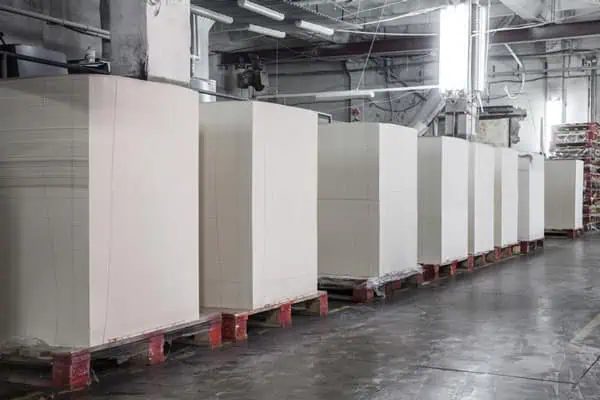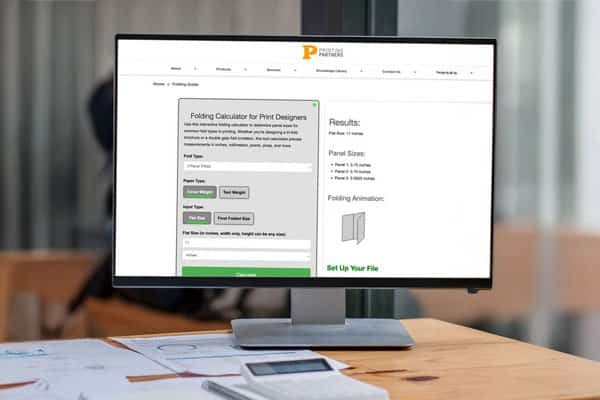Pantone vs CMYK: When to Use Spot Colors in Printing
Pantone inks and CMYK process printing are two different methods used in commercial printing. Understanding the difference is critical for graphic designers and print buyers who need color consistency, brand accuracy, and predictable results. This guide explains what Pantone spot colors are, how they differ from CMYK, how to set up your files, and what to do since newer Adobe software no longer includes Pantone libraries by default.
What Are Pantone Spot Colors?
The Pantone Matching System (PMS) is a standardized system that uses premixed inks to achieve exact, repeatable colors. Pantone provides designers and printers with color guides and swatches so the color you specify is the same no matter where it is printed.
- Pantone spot colors are ideal for logos, branding, and corporate identity.
- They ensure exact color matching across different print runs.
- Special inks like metallics, fluorescents, and pastels are only possible with Pantone.
Pantone Coated vs Uncoated
When you select a Pantone number, you will often see a “C” (coated) or “U” (uncoated) after it. This indicates the type of paper stock the color swatch is based on:
- Coated (C): Designed for glossy, coated papers. Colors appear sharper, brighter, and more saturated.
- Uncoated (U): Designed for uncoated papers like letterheads or stationery. Colors look softer and may appear darker because ink absorbs into the sheet.
It’s the same ink, but the paper finish changes how the color looks. Always check the coated vs uncoated swatches when approving brand colors.
What Is CMYK?
CMYK stands for Cyan, Magenta, Yellow, and Black (Key). These four process inks are combined in tiny dots to create the full spectrum of printable colors. CMYK is excellent for offset printing with photos, gradients, and complex graphics.
- Most marketing materials such as brochures and magazines use CMYK.
- It is cost-effective for large runs with many colors.
- Some vibrant or brand-specific colors cannot be matched exactly in CMYK.
Pantone vs CMYK: Key Differences
- Accuracy: Pantone offers precise matches, while CMYK approximates colors.
- Cost: Pantone spot colors increase press setup costs, but CMYK uses the standard four-color process.
- Special Effects: Metallics, neons, and pastel inks are only possible with Pantone.
- Use Cases: Pantone is preferred for logos and branding; CMYK is preferred for full-color images.
How to Set Up Pantone Spot Colors in Your File
If your job requires Pantone spot colors, your file setup must be correct before sending to press. Here’s how to do it in Adobe Illustrator or Adobe InDesign:
- Open the Swatches panel.
- Choose New Swatch and set the Color Type to Spot Color.
- Select the Pantone+ Solid Coated or Pantone+ Solid Uncoated library and pick your color.
- Apply the spot color to fills, strokes, or text where required.
For Photoshop, define spot colors in the Channels panel and save as a DCS 2.0 or PSD file with spot channels intact. Always name the swatch with the official Pantone code (e.g., “PANTONE 185 C”).
LAB Values and Converting Pantone to CMYK
The most accurate way to simulate Pantone colors in CMYK is by using LAB values. Each Pantone swatch is defined by LAB, a universal color space. Converting LAB to CMYK in your design software ensures the closest possible match when spot colors aren’t available.
- LAB defines how the human eye sees color, making it device-independent.
- When you enter LAB values for a Pantone number, the conversion to CMYK is more precise than guessing or using RGB.
- Always check a printed proof if your project requires exact matching.
Adobe and Pantone: The New Reality
As of 2022–2023, Adobe removed built-in Pantone libraries from Creative Cloud applications. Instead, you must now use the Pantone Connect plugin, which requires a subscription.
- Pantone Connect: Official plugin for Illustrator, InDesign, and Photoshop with access to the full Pantone library.
- Free Alternatives: Tools like Freetone offer a free Pantone-like swatch library.
- Manual Entry: Pantone’s official website provides LAB and CMYK breakdowns you can enter directly into your document.
Key Takeaways
As oial inks, metallics.
Conclusion
Choosing between Pantone and CMYK depends on your project’s needs. At Printing Partners, we help you determine whether your print job benefits from Pantone spot colors or the efficiency of CMYK process printing. Explore related resources like our Paper Types Explained page to understand how coated vs uncoated paper affects your final product. Our team ensures your files are press-ready, guaranteeing accuracy and consistency on every run.
Understand More

Paper Types Explained
Discover the differences between coated, uncoated, matte, and gloss paper stocks. Learn how paper weight and finish affect the look, feel, and durability of your printed piece so you can choose the right option for brochures, books, or marketing materials.

Binding Types
From saddle stitch to perfect bound and Wire-O, each binding style creates a different look and level of durability. Explore which binding method best suits your booklet, catalog, or publication so your project is both functional and professional.

Folding Calculator
Folding layouts can be tricky — our calculator makes it easy. Quickly figure out panel sizes and fold styles like tri-fold, Z-fold, or gatefold so your design lines up correctly and prints without surprises.